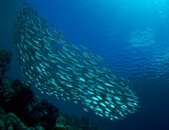divengolf
Contributor
Martin Edge has recently revised his UW Photo book to include a lot of digital stuff. It's in it's third edition and is an excellent source for techniques, esp. the second half of the book. I don't recall the exact title, but something like Guide to UW Photo. Easy to find on Amazon.
Make sure that you get the 3rd edition.
Make sure that you get the 3rd edition.




